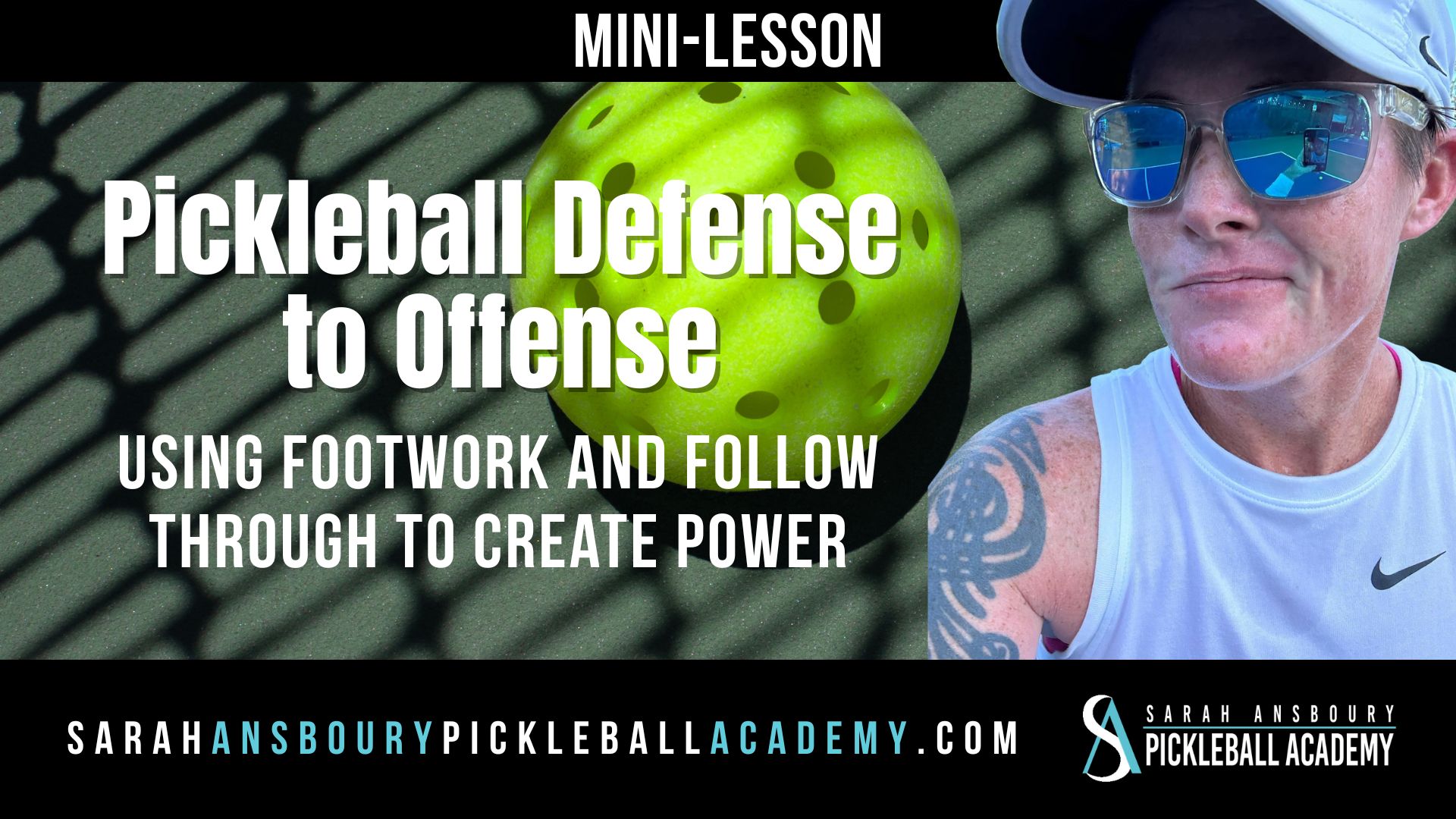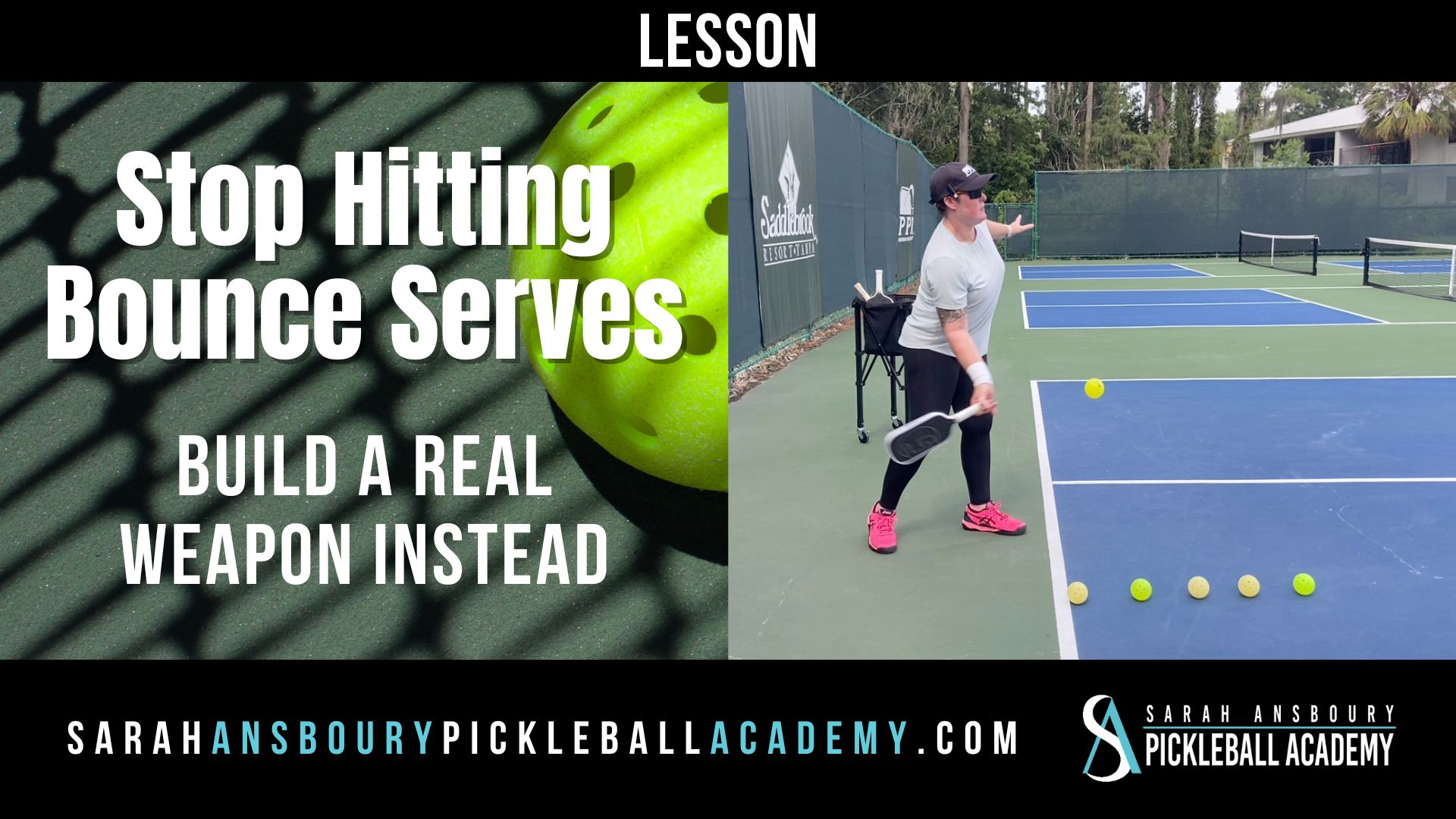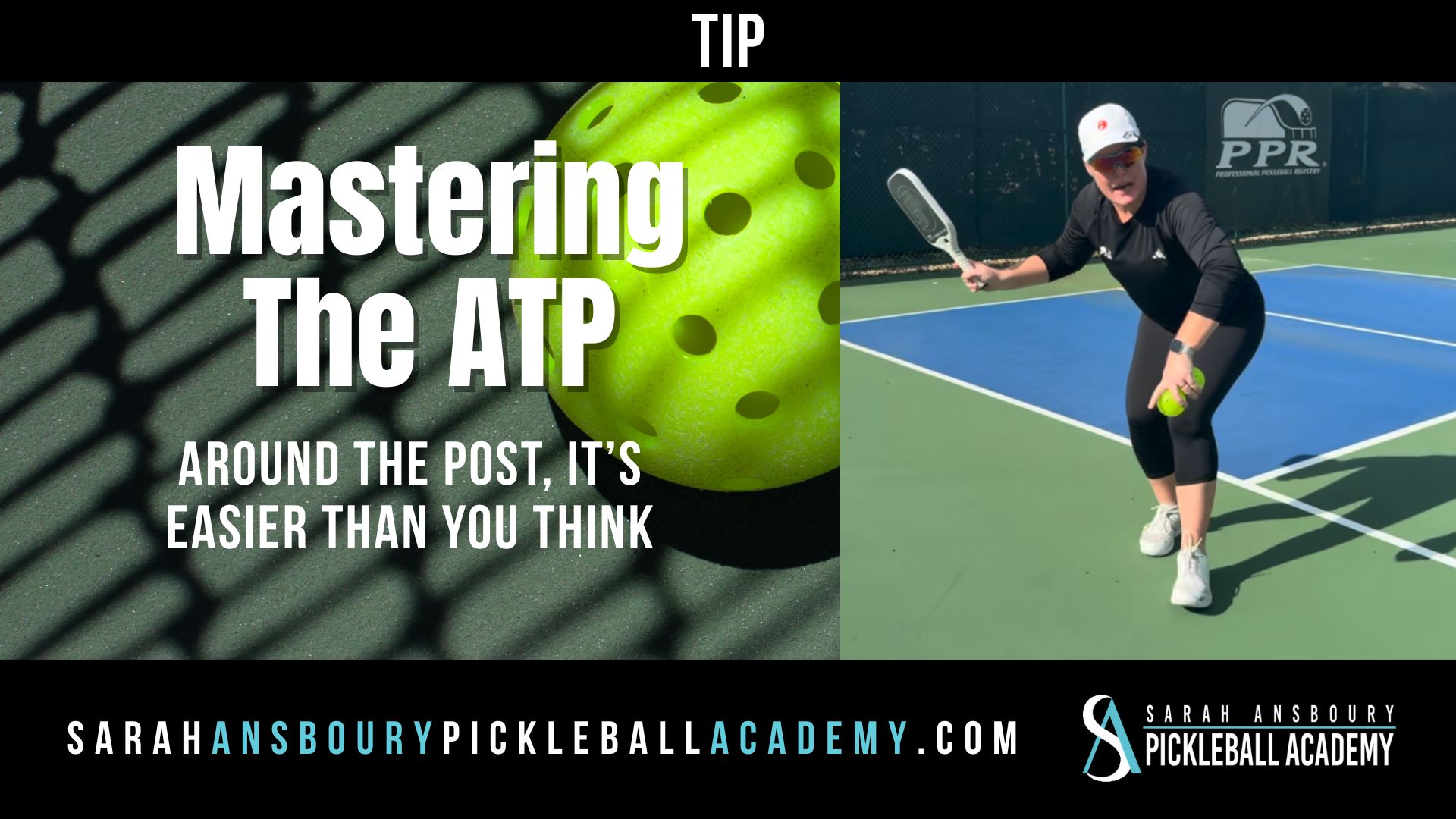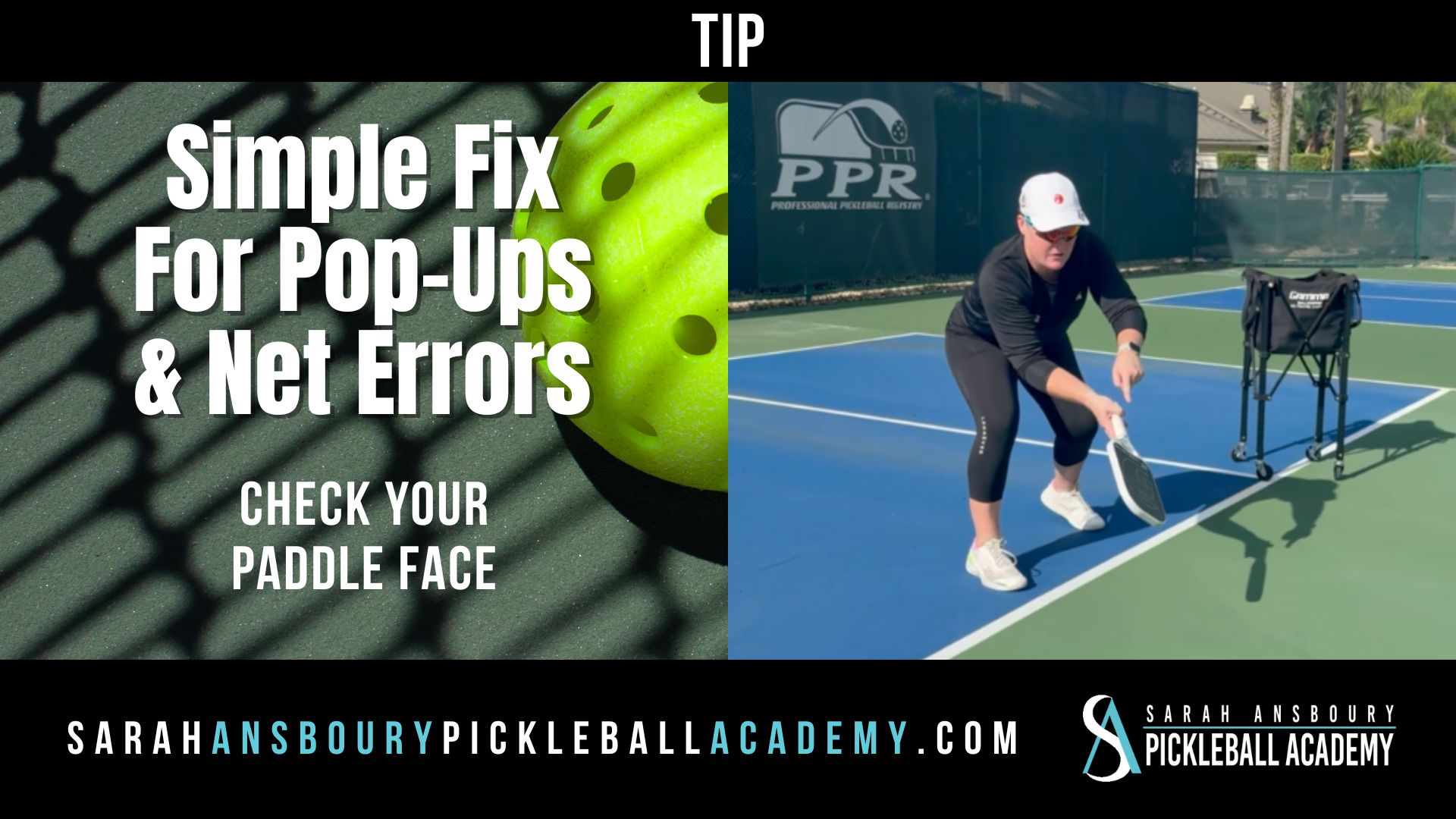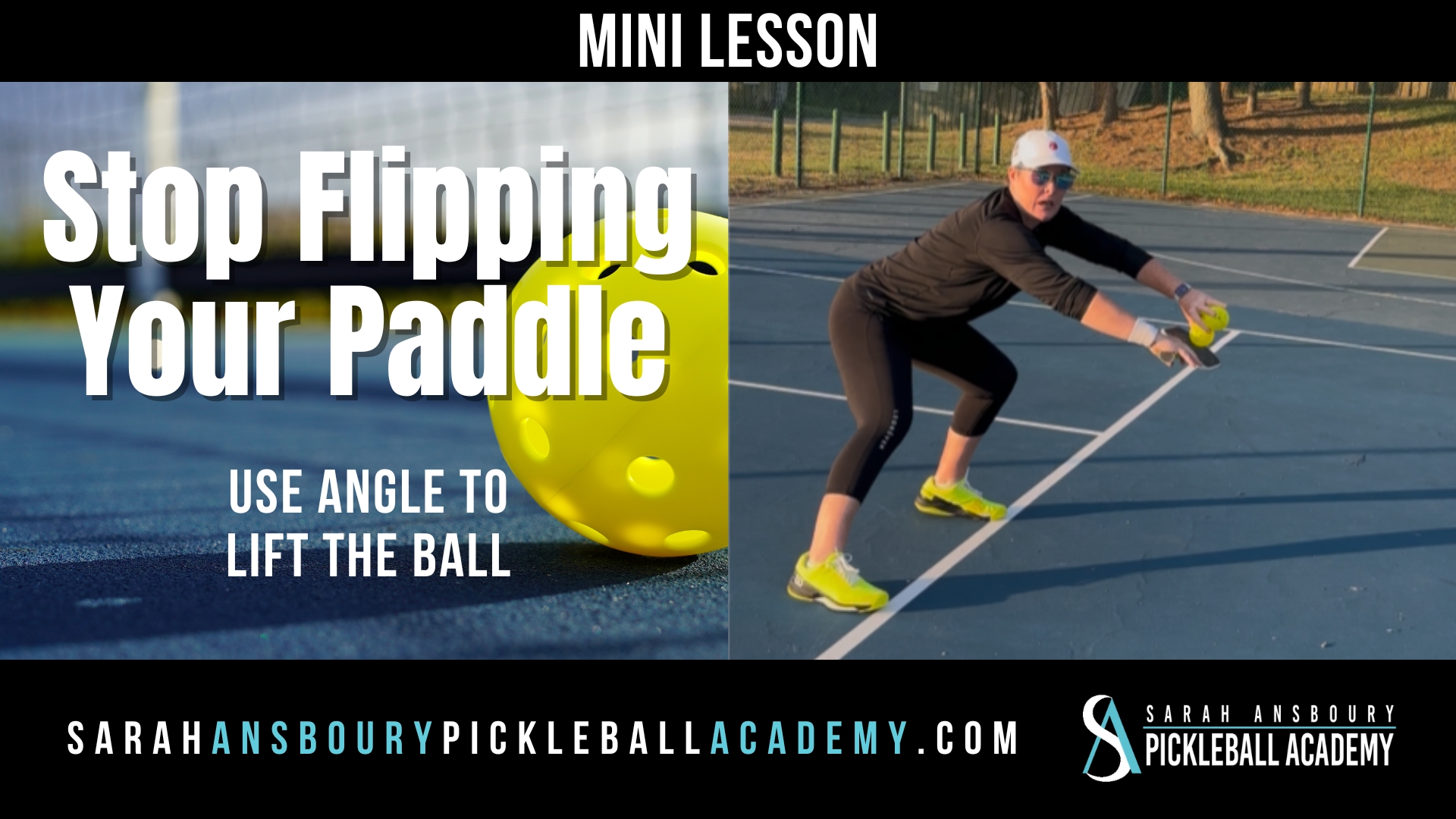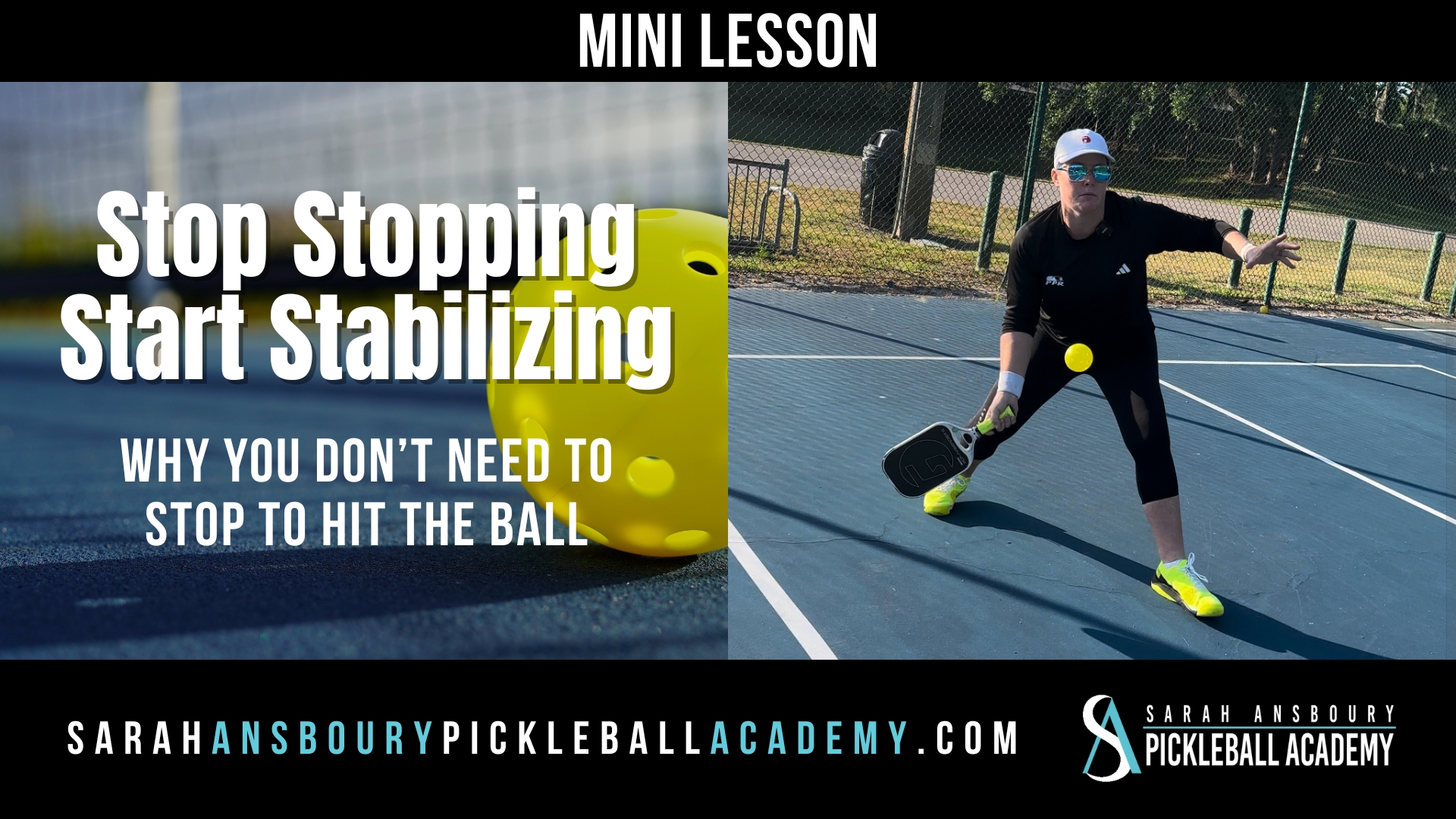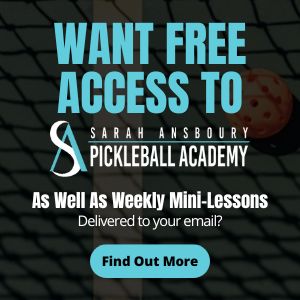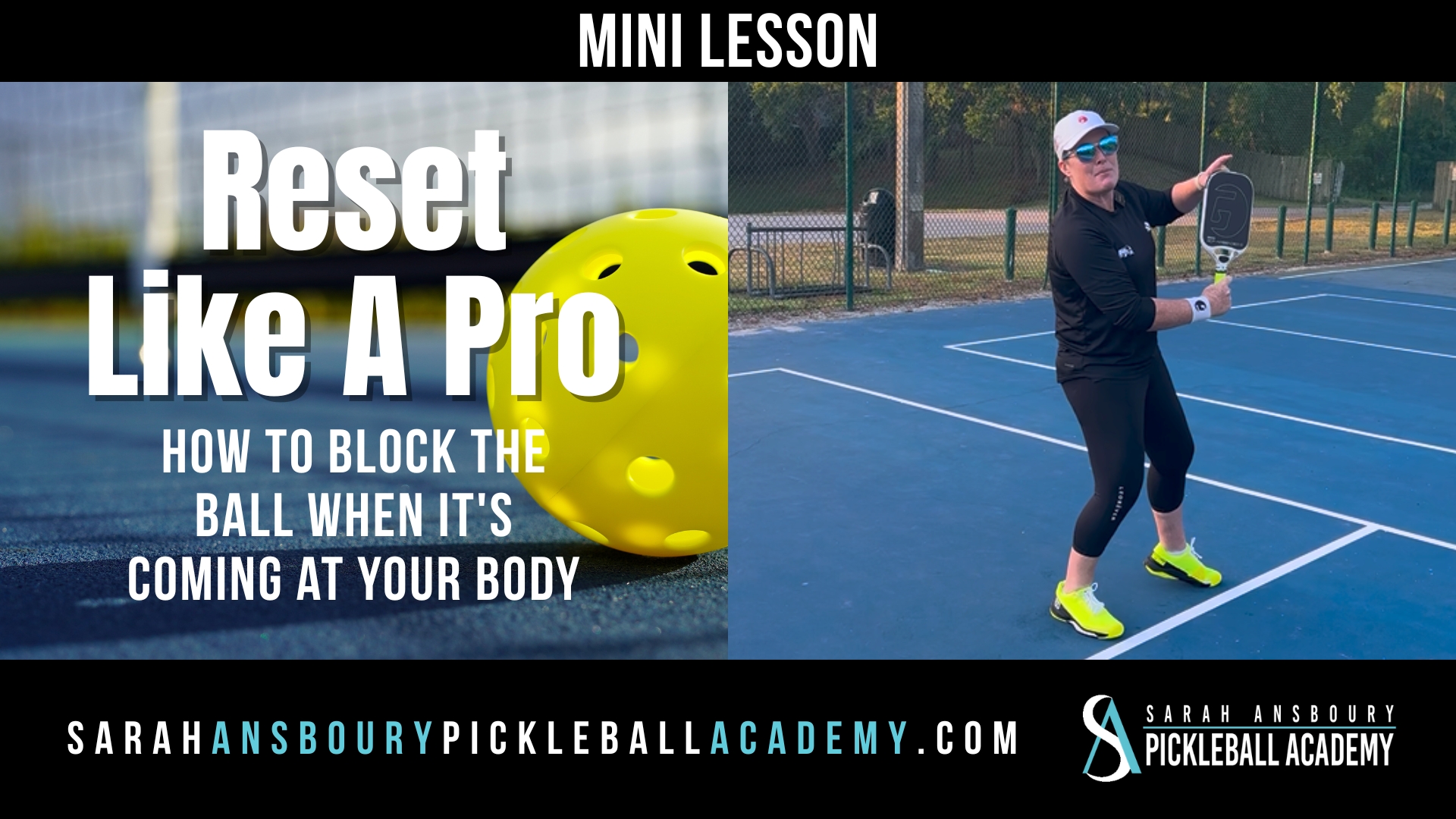There seem to be two schools of thought when it comes to pickleball serves. Some believe that you just loft it in to start the point. Others want it to be an offensive weapon. I believe it depends.

Since pickleball doesn’t allow you one fault and since the ball just can’t travel as fast as a tennis ball, I doubt we will ever see dozens of aces during a pickleball match. But when I have the ball in my hand and I am confident in my serve I do try to do something with it. I work hard to
- Hit the serve deep
- To favor the receiver’s backhand (in most cases), and
- To hit a low, penetrating shot.
Pickleball Serves and Skill Level
 If you are a newer player or aren’t consistent in hitting your serves in, your sole goal should be to start the game. Since you only score when your team is serving, there is nothing worse than not giving yourself an opportunity to win a point. The great news for new players is that you don’t need a practice partner or ball machine to practice serving. All you need is a few balls and an empty court. Keep in mind that consistency will be improved when you utilize larger muscles, so keep your wrist fairly firm and swing from your shoulder. Extend your arm to your target. You need to hit the ball a bit harder than you might think, so many people step into the serve.
If you are a newer player or aren’t consistent in hitting your serves in, your sole goal should be to start the game. Since you only score when your team is serving, there is nothing worse than not giving yourself an opportunity to win a point. The great news for new players is that you don’t need a practice partner or ball machine to practice serving. All you need is a few balls and an empty court. Keep in mind that consistency will be improved when you utilize larger muscles, so keep your wrist fairly firm and swing from your shoulder. Extend your arm to your target. You need to hit the ball a bit harder than you might think, so many people step into the serve.
Where a newer player might just aim for the center of the service area, an intermediate player should work on direction and depth. Take a piece of chalk with you, and draw a line 3′ from the baseline. Work to groove a serve that lands deep, that is between the chalk line and the baseline. Create games with yourself related to hitting 12″ from the center line or sideline to develop a serve that can capitalize on an many opponent’s weaker backhand.
Practicing Pickleball Serves
Regardless of your skill level, it is important to practice serving mindfully. You are wasting time if you simply hit ball after ball without a purpose. Previously we discussed Focused Pickleball Practice, i.e. having a plan and committing to practicing productively. You want to practice with the same attention and focus as when you play.
Perhaps you have seen someone suddenly have difficulties in their serve. One day they are fine, and the next…seemingly for no reason…they can’t get it in. This may continue for a few days or even weeks. Suddenly their arm or wrist is doing something it never did before. Why? Unfortunately, the player’s mind, not their swing or the paddle, is the problem. If this occurs, let me recommend a few things:
- Develop and Practice a Pre-shot Routine: You have seen basketball players bounce the ball three times, then spin it towards their body in their hands, then shot a free-throw. The best free throw shooters do it the same way every time. Nadal pulls at the seat of his pants before he serves. Another player may bounce the pickleball twice and then hit. It really doesn’t matter what the routine, or ritual, is…you just need to have one.
- Slow Down: Great golfers don’t putt until they can see the ball going into the hole. If every thought in your mind is, “OMG I’m going to hit someone in the next court” you probably will. In fact, I have observed that when someone is having difficulty serving, they will actually take less time preparing. Their focus is on getting it over with, rather than getting it in. Slow down, take a deep breath. Recall all the times your serve went in. Remember, your last serve cannot influence or determine your next one unless you choose to let it.
- Pick a Target: Focus on one spot in the service area. Not the entire court. Not the entire service box. Look at one spot, perhaps a 1′ square near the middle of the service box. The narrower your focal point the better.
When you practice serving, practice the way you play. Practice: preshot routine — focus and take a deep breath — pick a target — serve. Then before you hit the next ball take a moment and think. Evaluate how well you did. Did you execute your pre-shot routine? Did you focus on getting it in or getting it over with? Did you pick a small target?
It is more likely your thoughts and beliefs determined the outcome before the paddle ever struck the ball.

